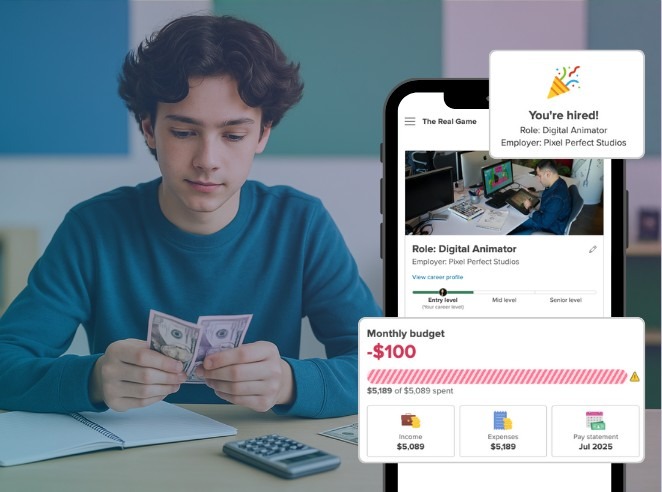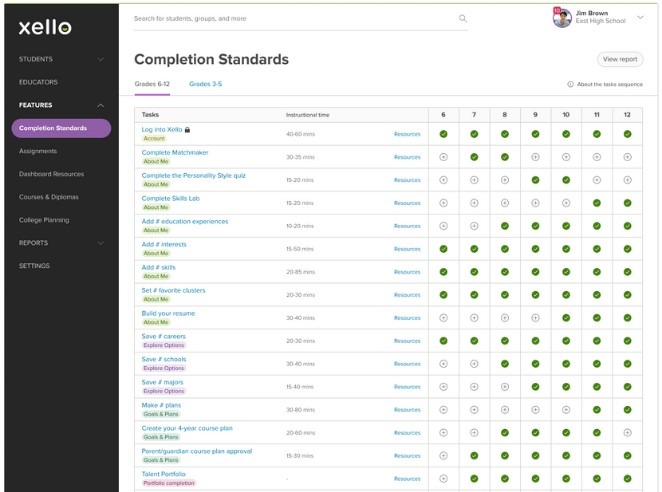Make the Most of Virtual Learning With These Educator-Approved Tips

As an educator, how can you support students during the COVID-19 crisis? Read these top virtual learning tips from Counselor Kate McKenzie to help you make the most of remote learning & be there for your students during a crisis.
As educators adapt to virtual learning, it’s apparent that 2020 has already earned its spot in the history books. The world is grieving together as future memories, celebrations, routines, and lives have been lost. While data reports and world leaders’ messages are changing week to week, one thing is clear: people are not returning to their normal lives in the near future.
For educators, that means embracing a profession that is drastically different than the one they signed up for. Teaching is relationship-centered, but now educators are spending hours a day talking to their screens instead of interacting with students. Even for schools that relied heavily on technology, educators are struggling to support students and reestablish virtual learning norms.
At a time where everyone is feeling a little uncomfortable, it is important for educators to revisit and consider Maslow’s Hierarchy of Needs to make the most of remote teaching.
Focus On Kids, Not Standards to Make the Most of Virtual Learning
Kids are concerned about their health and safety. They may be feeling the financial strain of unemployed parents or the lack of connection with their spring teammates. They’re wondering what state testing, graduation, and academic recognitions will look like in the upcoming months.
Kids are grieving about the loss of their interpersonal connections, not the missed class time working on quadratic equations or writing thesis statements.
At this time of uncertainty, it’s essential for educators to be flexible. A student logged in to one of three offered virtual meetings this week? Awesome. Another only completed half of their assignments? Great. Teachers need to push their old academic expectations aside and meet kids where they are.
Many families are juggling multiple schedules, not to mention multiple devices, and working with a limited amount of time and space. For a lot of students, it’s not that they’re refusing to do the work, but simply can’t due to reasons outside of their control.
These stressed students may be on educators’ minds, as well as those who typically lack motivation to complete work. But what about those kids who just went through the motions of school for the camaraderie?
Or the ones that attended class so they could play in Friday night’s game? This is a new emerging group of students with whom teachers need to consider and connect.
One way to respect kids’ emotional needs is to pivot from correction to praise. In normal circumstances, the desired positive to corrective ratio is 3:1. Educators should consider only identifying student successes in virtual meetings in order to model positive interactions.
Additionally, this will prompt other learners to behaviorally and academically follow suit. Intentionality recognizing the positive will in turn build a more productive, motivational, and supportive online community for all students.
Recreate School Routines With Home in Mind
Schools and classrooms run on schedules, and kids, although they may not admit it, crave structure and predictability. In fact, consistent routines are not only comforting to students and families, but can also support prosocial behaviors and prevent challenging ones from arising.
It’s crucial to set standards for what the online classroom will look, sound, and feel like. It is never too late to revisit classroom expectations, since in normal times, teachers often reevaluate which procedures to practice and revise.
The virtual classroom is no different, and every student should feel heard, respected, and supported within that digital space. Creating routines and boundaries will help solidify these sought-after feelings and enhance academic, social, and emotional learning.
Another ally to set these routines are students’ families. Communicating new expectations to parents is an additional layer of support for educators and families alike.
Teachers want their rules to be reinforced, and many parents feel like they’re drowning as they navigate homeschooling. Encourage families to set up a home schedule that embodies the familiar school expectations.
Guiding resources should be shared; focus on those that are research-based and give clear-cut examples, such as this one provided by PBIS.
Encourage Self-Management and Emotional Regulation while Students Learn Virtually
As stated above, settling into a routine promotes a person’s social and emotional wellbeing. One by-product of setting virtual learning expectations is helping students practice self-management skills, such as changing out of pajamas for video chats and sitting up, not laying down on a bed or couch, while completing schoolwork. Promoting these expectations gives students a sense of normalcy and can lead to conversations about social thinking and social norms.
But teachers shouldn’t rely on kids only learning these soft skills inadvertently. Educators should intentionally consider the students’ social and emotional needs while lesson planning. One way to be an empathetic educator is to allow students to ease into virtual meetings by giving time to connect with peers.
If a class is content-driven and on a time crunch, allotting even ten minutes for students to greet one another, share favourite items in their home, or discuss how they are spending their time will lead to a more focused and connected environment.
It’s essential to give students the opportunity to participate, but equally important to not force it upon them. Some students may not want to verbally engage during these vulnerable times, but that doesn’t mean that they shouldn’t continue practicing self-regulation.
Teachers can model talking about coping strategies (such as exercising, journaling, or using virtual wellness tools) to keep their minds and bodies active. Alternatively, educators can implement direct social-emotional instruction by using vetted online programming.
One such program is Xello. Xello’s lessons direct students through interactive activities in which they identify executive functioning skills as well as learn about the importance of emotional regulation. Xello’s future-planning tools also provide an optimistic reminder for students that, one day, life will regain a sense of normalcy.
By assigning lessons that take social-emotional wellness into consideration, without actually discussing current issues, Xello grants students a needed break from media coverage while still encouraging self-regulation.
Lean on Help From School Counselors, Psychologists, and Social Workers
Even though creating new routines and strengthening student connectedness are vital to virtual learning success, these practices won’t fully sweep away students’ worries. From food insecurity to missing in-person interactions, kids may be experiencing chronic stress or secondary trauma. It is important for educators to look out for these three main indicators:
- Physical reactions: This includes exhaustion, headaches, stomachaches, sleeping or eating, and abnormal confusion.
- Emotional symptoms: Students may express excessive anxiety, feelings of anger, demoralization, distressing dreams, and suicidal thoughts.
- Social signs: Interpersonal problems may show through new difficulties in relationships, outbursts, social withdrawal, and substance abuse.
If you see these forms of stress manifesting in students, it’s critical to communicate your concerns to the appropriate school helpers. Connecting with your school counselor, psychologist, or social worker not only takes the burden off your shoulders but signals to the student that you care about his or her wellbeing.
Mental wellness professionals are trained to reduce barriers of learning; they have an abundance of resources and tips to help families navigate these unstable times and can connect them with the right support.
If your school does not have any type of mental wellness professional, speak to your administration to determine what your course of action should be if you suspect a child to be in physical or emotional danger. This knowledge should not rest on your shoulders alone.
In short, educators should rely on what they learned week one in undergraduate classes. Teaching is about developing relationships with students and investing in that child’s whole self. While reading books and memorizing history facts are important, right now children need to know that, if nothing else, their teacher is in their corner.
Virtual Learning Resources for Further Reading
Free Resources for Schools, Educators & Parents During COVID-19
How to Use Xello for Remote Learning
5 Ways to Facilitate Remote Learning Successfully During Uncertain Times



